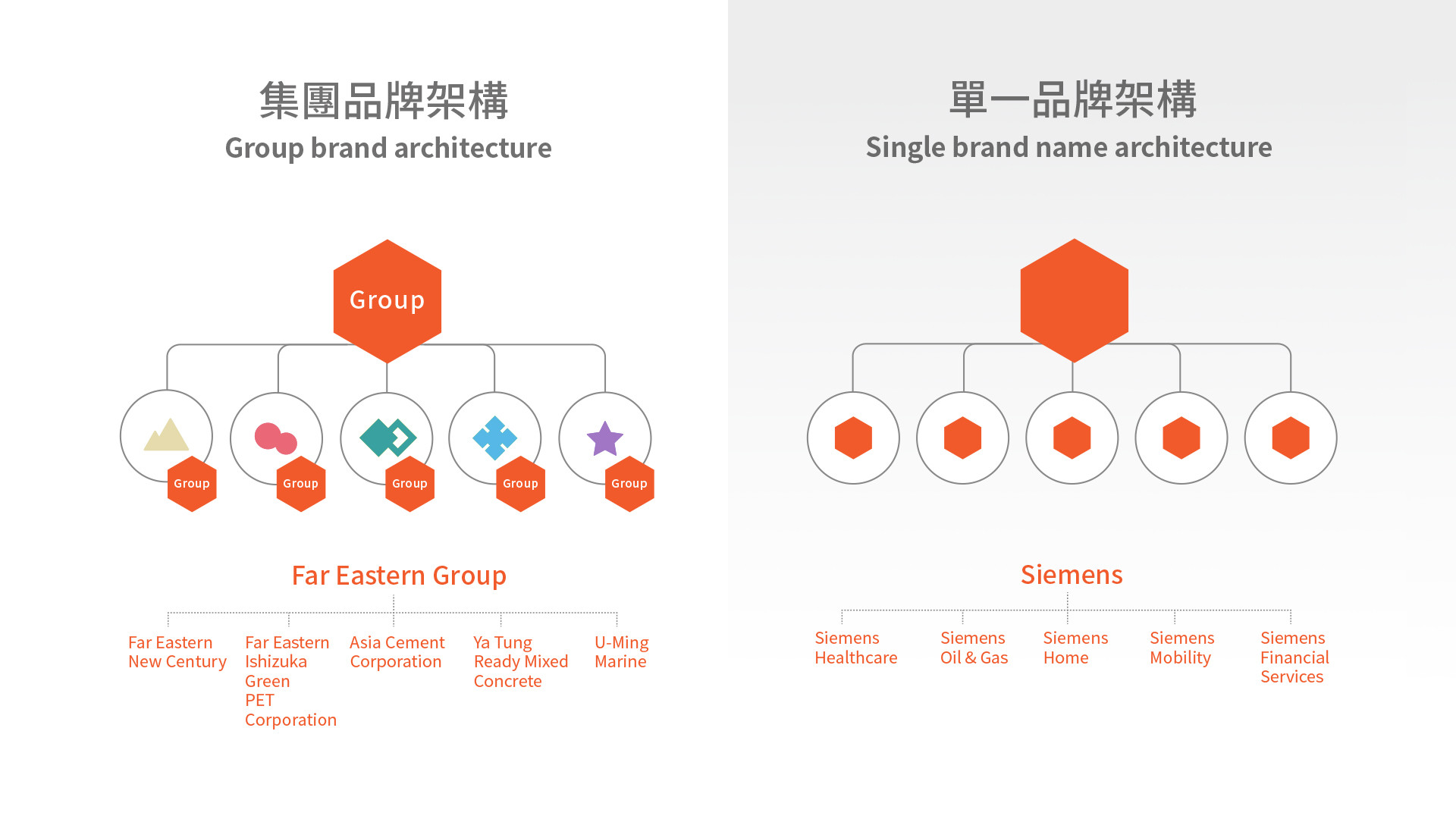More and more of Taiwan’s large domestic conglomerates are seeking growth overseas, but are they making the right choices when it comes to corporate branding?
In recent months DDG has completed a series of large-scale brand re-development projects for some of Taiwan’s largest conglomerates. These corporations, sensing diminishing opportunities in the domestic market, are making the move to expand into overseas markets. To succeed internationally, they will need to be strategic with their choice of projects and people. They will also need to be strategic with their brand.
Our recent work exposes how a significant number of large-scale Taiwanese conglomerates may be selecting the wrong strategy for their corporate branding efforts, as their decisions are influenced unintentionally by the nuances of language.
There is an affinity among many of Taiwan’s largest companies to demonstrate the scale of their operations by the affixing of the word ‘group’ (集團) to the end of the parent company’s name. These companies are easy to spot: Far Eastern Group (遠東集團), Fair Friend Group (友嘉集團), and Chinfon Group (慶豐集團), just to name a few. By my reckoning, more than half of Taiwan’s top 100 enterprises have adopted the Group naming convention.
The role of the Group label is seen as two-fold. Through the addition of the word, the parent company is able to collect related entities under a single moniker and through this demonstrate greater size. Subsidiaries, meanwhile, benefit from the association as they are able to claim association with the larger, financially stable parent company when meeting with potential customers and partners.
As a brand consultant, it is my job to help each DDG client select the best possible strategy for their brand. It is important for me to be open to brand marketing practices that have the potential to benefit their business. When it comes to the use of the Group descriptor, I see some merit. The addition of the word Group does impart the impression of scale when rendered in the Chinese language as 集團. Yet, while this works for Chinese-speaking markets such as Taiwan and China, this descriptor is considerably less effective in non-Chinese speaking markets where the word is rendered as Group.
When it comes to international brand management, the addition of the Group descriptor is one of the least savvy decisions a management team can make with its corporate branding efforts. To begin with the English word ‘group’ does little to communicate scale or size, much in the same way words like ‘innovation’ and ‘quality’ carry little significance in today’s business vocabulary do their misuse and overuse. Three more factors make the introduction of the Group brand less than ideal.
The introduction of the Group brand is, in effect, the creation of a pseudo-entity—a company that exists in name, but not in reality. A non-existent corporation is promoted as endorser to subsidiaries, and, in an even stranger twist, the Group brand even becomes an endorser of the parent company. One is left asking why the parent company doesn’t simply endorse the subsidiaries without the need for introduction of the Group brand.
The Group brand logo soon appears on business cards, websites and powerpoint presentations of subsidiaries, sometimes placed next to and larger than the subsidiary logo. While the presence of the Group logo is meant to help associate the subsidiary with the parent company, unfamiliarity with the Group brand, as is the case for many Taiwanese brands entering overseas markets, only serves to complicate brand communications.
The Group brand also adds to brand management complexity. The parent company must now employ a team to monitor the implementation of the Group brand (logo) to subsidiaries’ marketing efforts, leading to additional management cost and expense. If such a team isn’t put in place, in part to avoid additional cost and expense, then inconsistent implementation of the Group brand (logo) contributes to a poorly managed image for the conglomerate.
By contrast, the world’s most successful conglomerates rarely apply the Group descriptor. Large multi-national conglomerates such as IBM, Siemens, GE, Toshiba, Toyota and Samsung own, operate and oversee hundreds of subsidiaries, and yet not a single one of them has chosen to promote their brand with the Group descriptor.
The reason is simple. The Group descriptor adds little value to the outward facing communication of the brand. It provides no value in differentiating the brand from competitors, nor does it effectively communicate positioning or offerings. What it does do, however, is lengthen the name, making it more difficult to pronounce and less likely to be recalled.
International conglomerates such as IBM, Siemens, and Samsung have forgone the Group descriptor in favor of bringing all subsidiaries under a single brand name. Whilst individual businesses have names such a Siemens Telecommunication Services, Inc. and Siemens Energy & Automation, Inc., they all carry the single Siemens brand.
The benefit of the shared use of a single and simple name and logo is that the brand name achieves greater recognition in the marketplace. The wide range of services underneath the single brand name serves to build associations for the brand, and these associations—namely, being successfully involved in various businesses and markets—serve to demonstrate and communicate the scale of the brand. A single name with associations in many businesses enhances brand recall among potential customers across multiple business categories, and at the same time aids investors in deciding in which businesses to invest.
In our experience, the introduction of the Group brand, more often than not, achieves little more than brand name confusion, inconsistent identity implementation, weak brand communications and, ultimately, a weak parent company brand. While it might be suitable for conglomerates focused on the Greater China market to continue to apply the Group descriptor in Chinese, for those corporations venturing overseas, building a single brand applied across all business units is without a doubt the smarter move.



